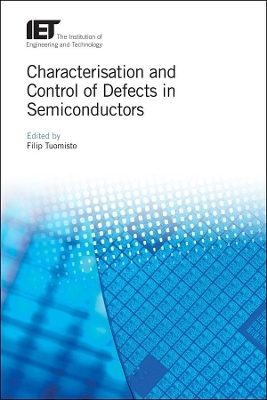
Characterisation and Control of Defects in Semiconductors
Institution of Engineering and Technology (Verlag)
978-1-78561-655-6 (ISBN)
Understanding the formation and introduction mechanisms of defects in semiconductors is essential to understanding their properties. Although many defect-related problems have been identified and solved over the past 60 years of semiconductor research, the quest for faster, cheaper, lower power, and new kinds of electronics generates an ongoing need for new materials and properties, and so creates new defect-related challenges.
This book provides an up-to-date review of the experimental and theoretical methods used for studying defects in semiconductors, focussing on the most recent developments in the methods. These developments largely stem from the requirements of new materials - such as nitrides, the plethora of oxide semiconductors, and 2-D semiconductors - whose physical characteristics and manufacturing challenges are much more complex than in conventional Si/Ge or GaAs. Each chapter addresses both the identification and quantification of the defects and their characteristics, and goes on to suggest routes for controlling the defects and hence the semiconductor properties. The book provides valuable information and solutions for scientists and engineers working with semiconductors and their applications in electronics.
Filip Tuomisto is a professor at the Department of Physics, University of Helsinki, Finland. He specializes in the development of experimental methods based on positron annihilation spectroscopy, and in the application of these methods to studying defects in solids in general and semiconductors in particular. He has published more than 200 scientific journal articles on these topics.
Chapter 1: Characterizing electrically active defects by transient capacitance spectroscopy
Chapter 2: Luminescence from point defects in wide-bandgap, direct-gap semiconductors
Chapter 3: Vibrational spectroscopy
Chapter 4: Magnetic resonance methods
Chapter 5: The role of muons in semiconductor research
Chapter 6: Positron annihilation spectroscopy, experimental and theoretical aspects
Chapter 7: First principles methods for defects: state-of-the-art and emerging approaches
Chapter 8: Microscopy of defects in semiconductors
Chapter 9: Three-dimensional atomic-scale investigation of defects in semiconductors by atom probe tomography
Chapter 10: Ion-beam modification of semiconductors
Chapter 11: Characterizing defects with ion beam analysis and channeling techniques
| Erscheinungsdatum | 04.12.2019 |
|---|---|
| Reihe/Serie | Materials, Circuits and Devices |
| Verlagsort | Stevenage |
| Sprache | englisch |
| Maße | 156 x 234 mm |
| Themenwelt | Technik ► Elektrotechnik / Energietechnik |
| ISBN-10 | 1-78561-655-2 / 1785616552 |
| ISBN-13 | 978-1-78561-655-6 / 9781785616556 |
| Zustand | Neuware |
| Haben Sie eine Frage zum Produkt? |
aus dem Bereich


